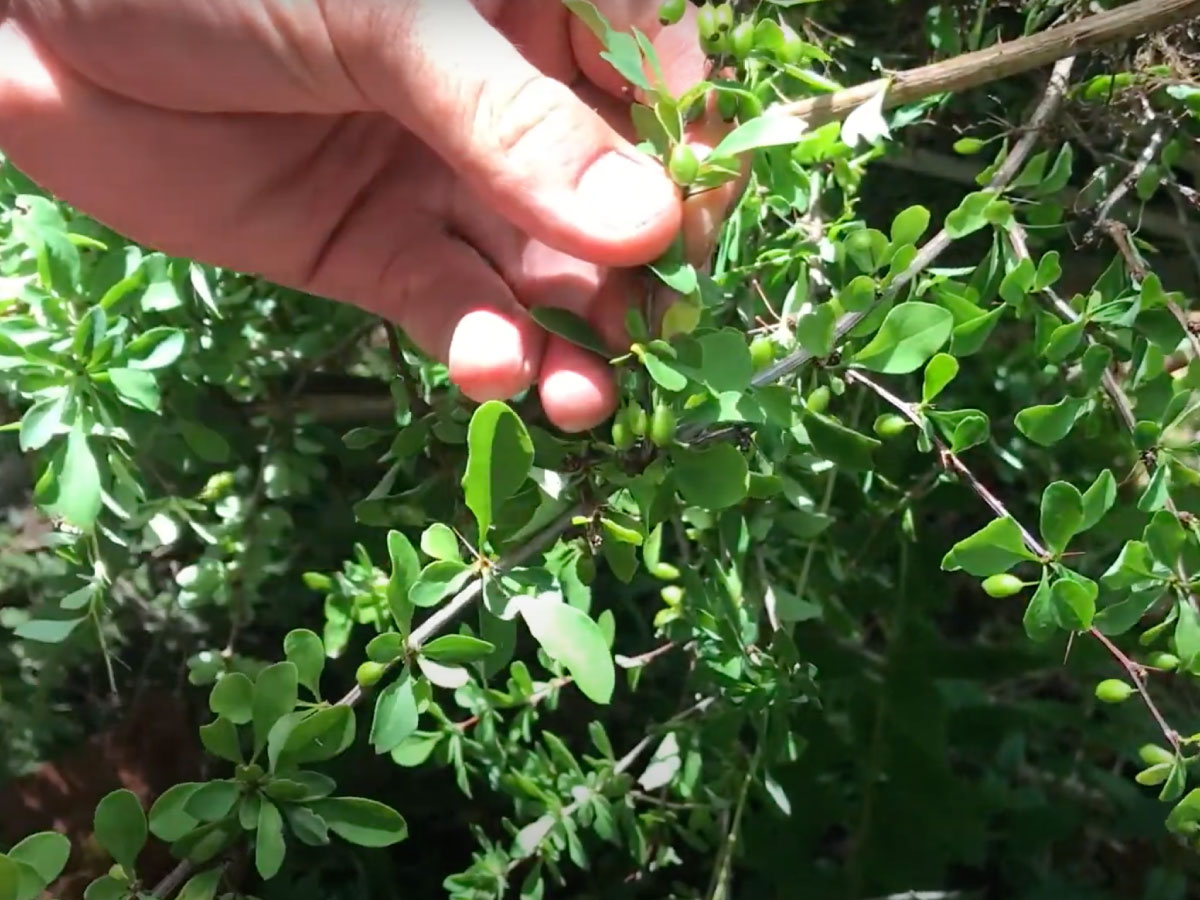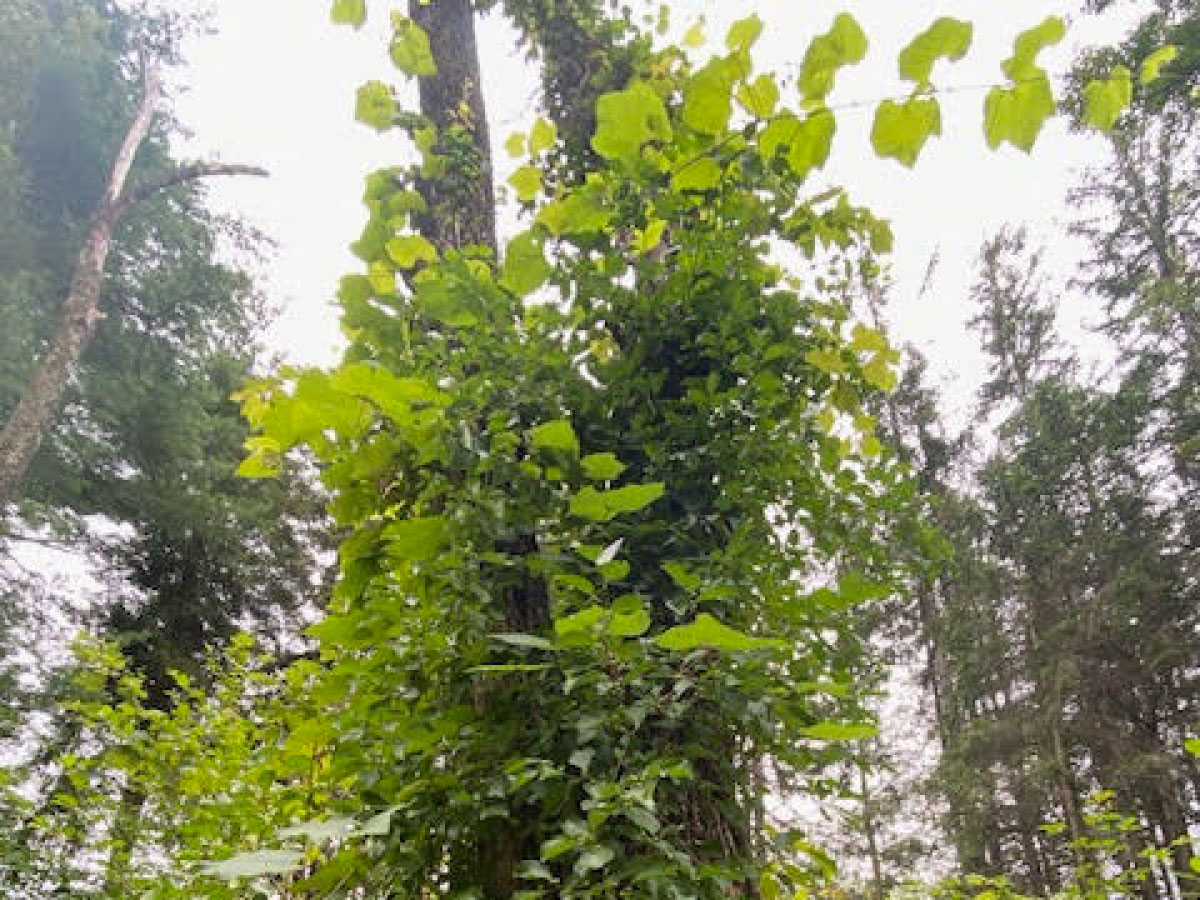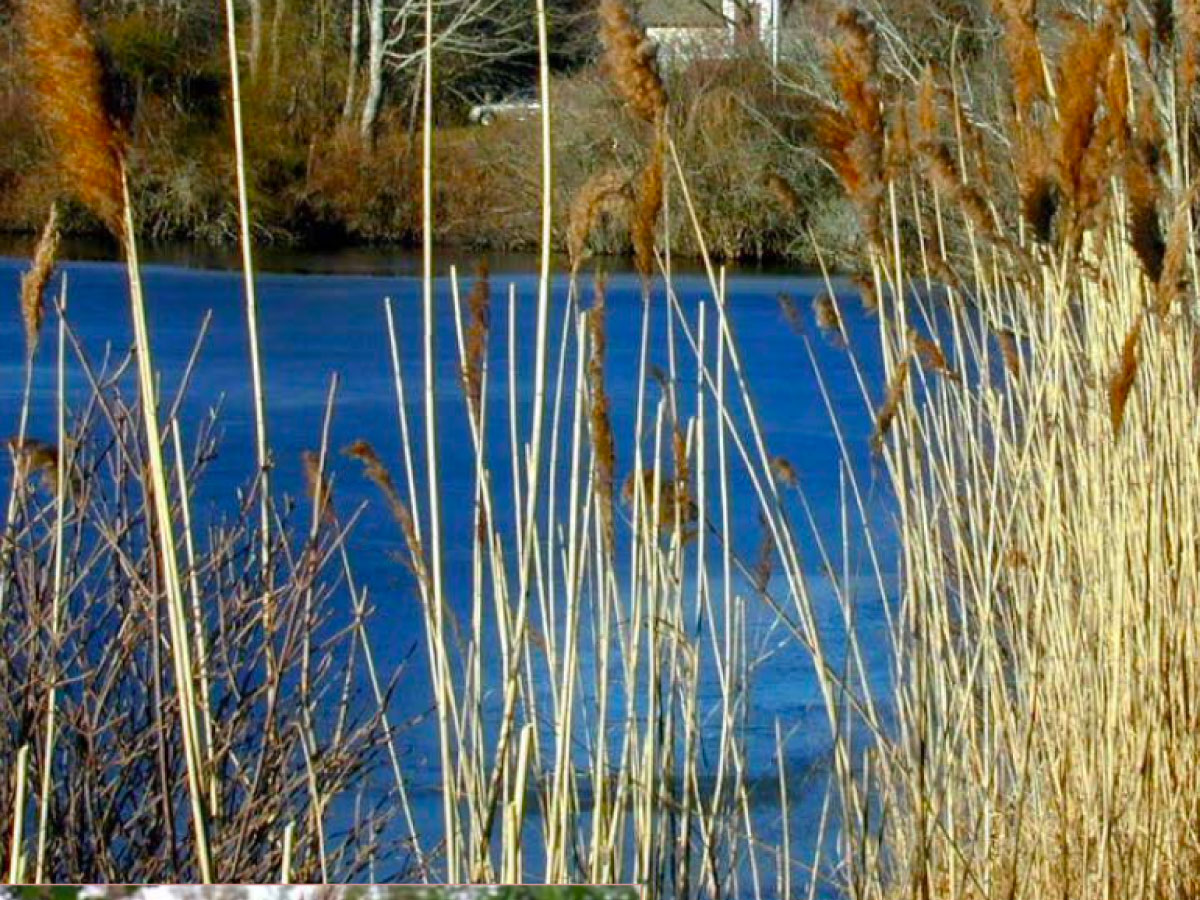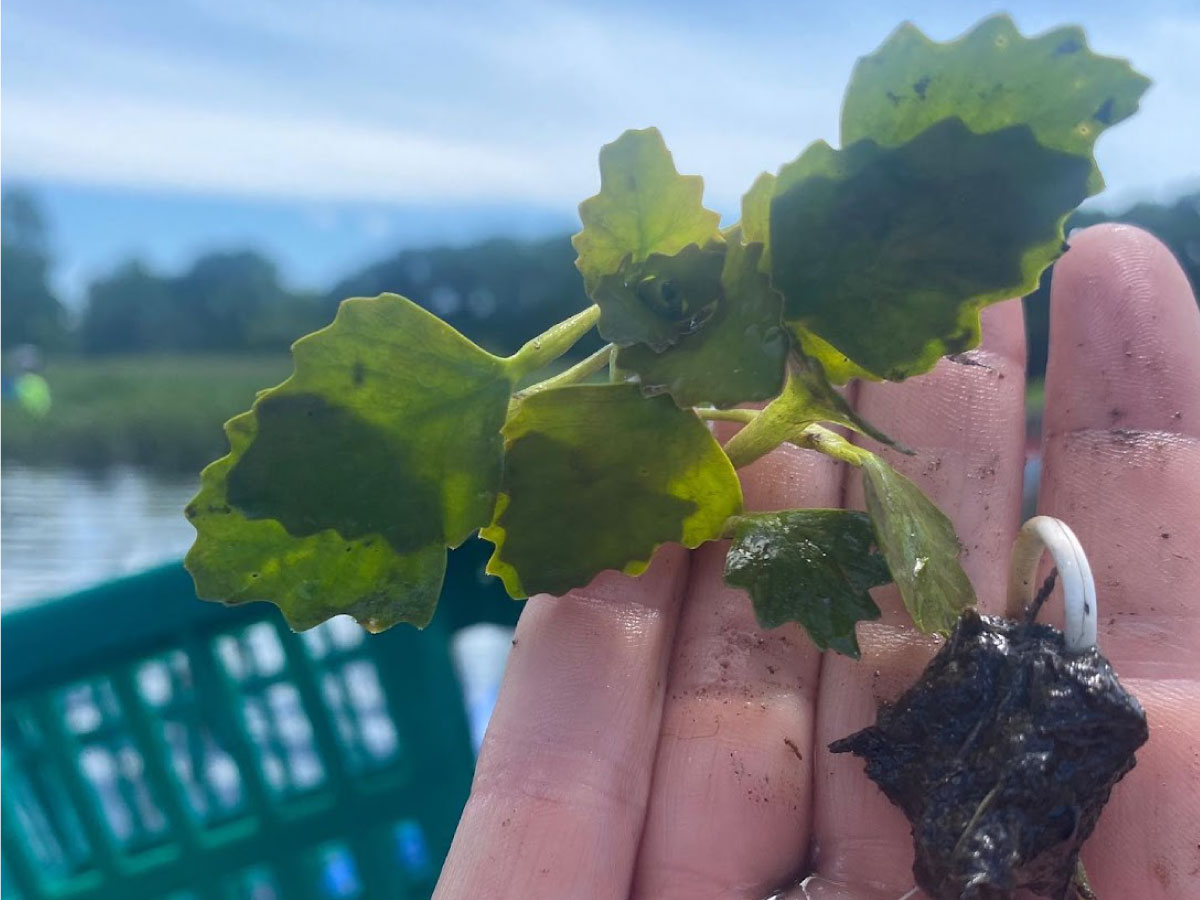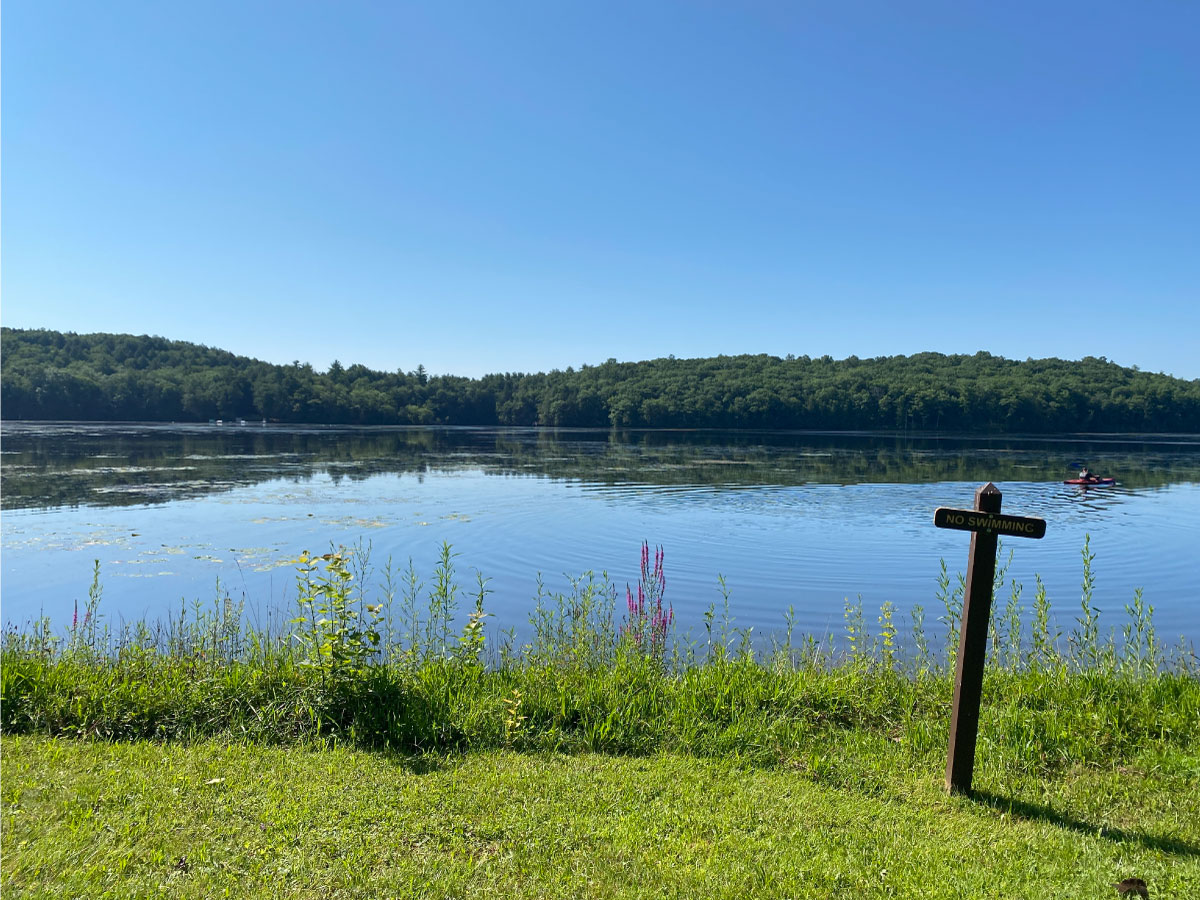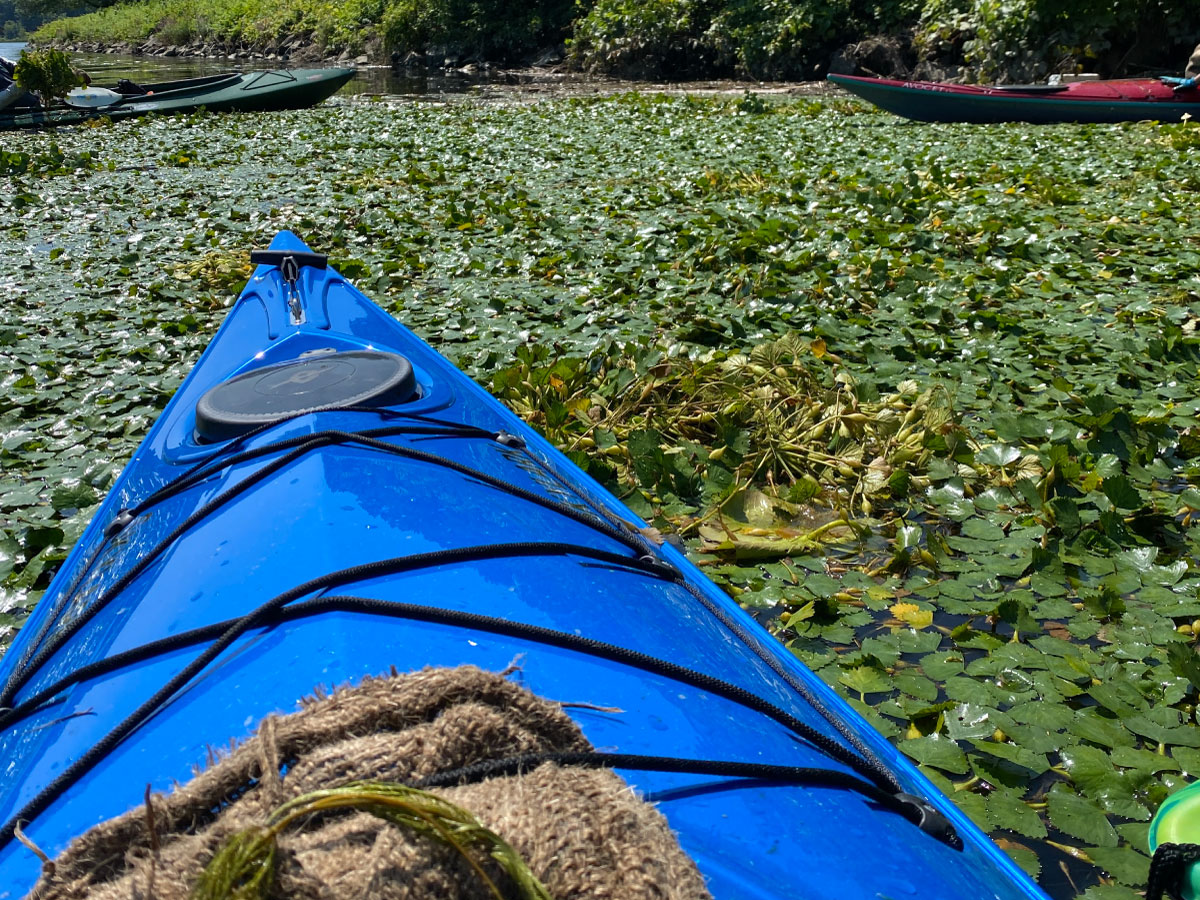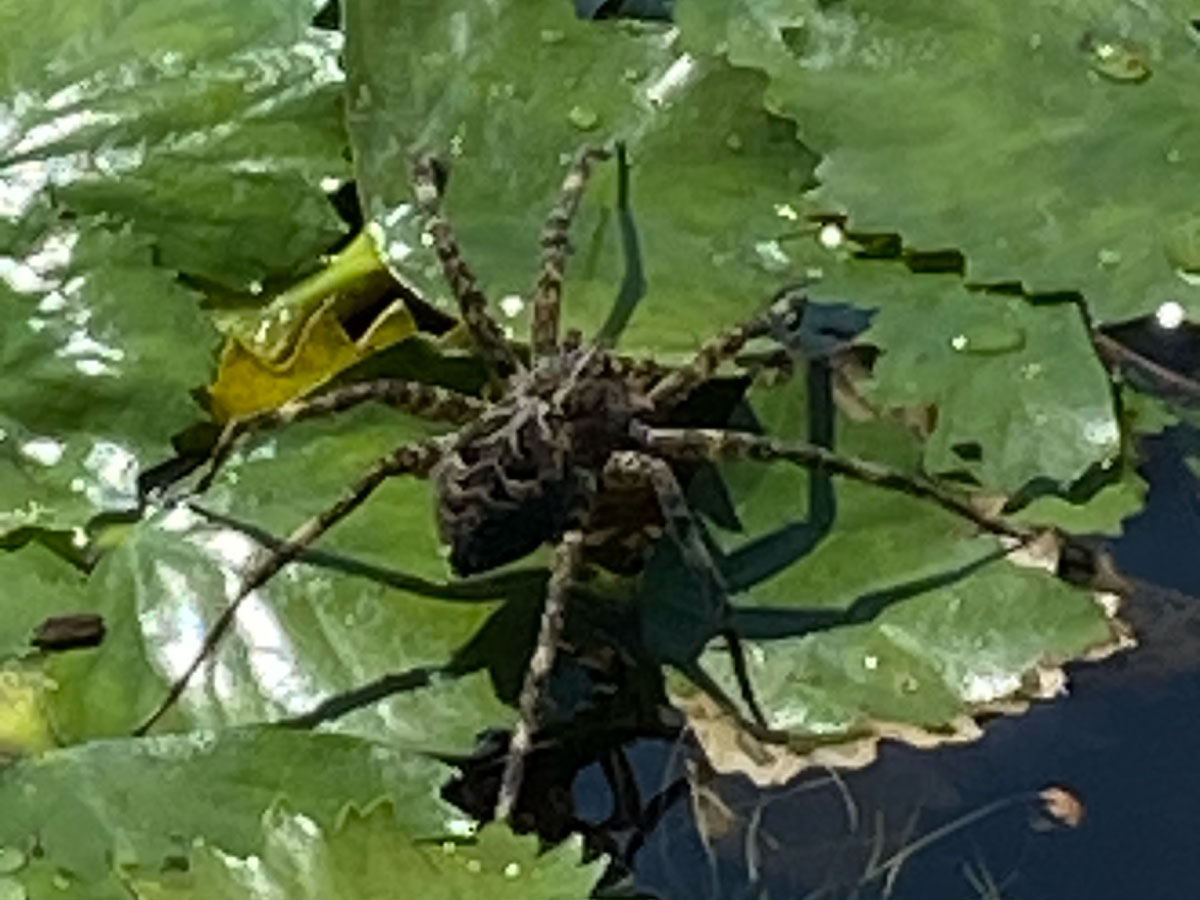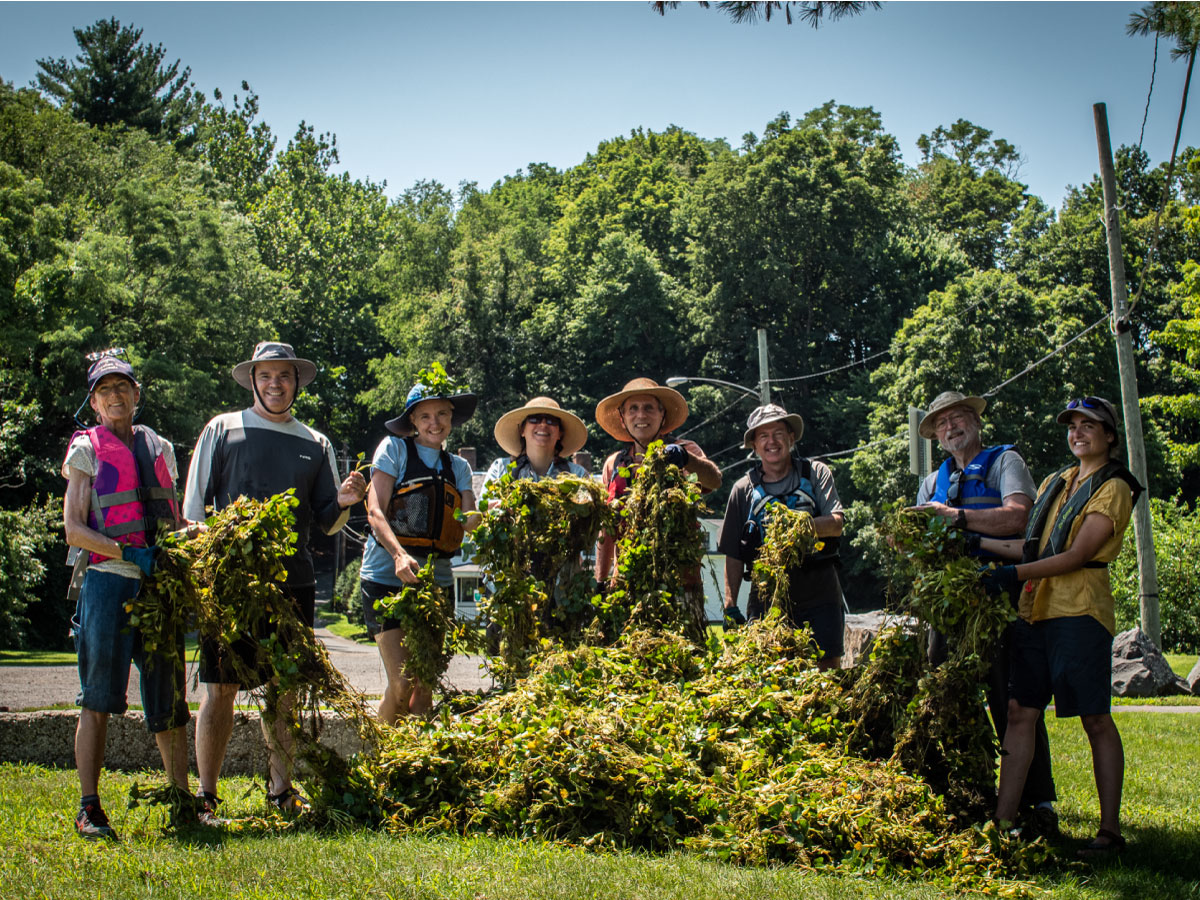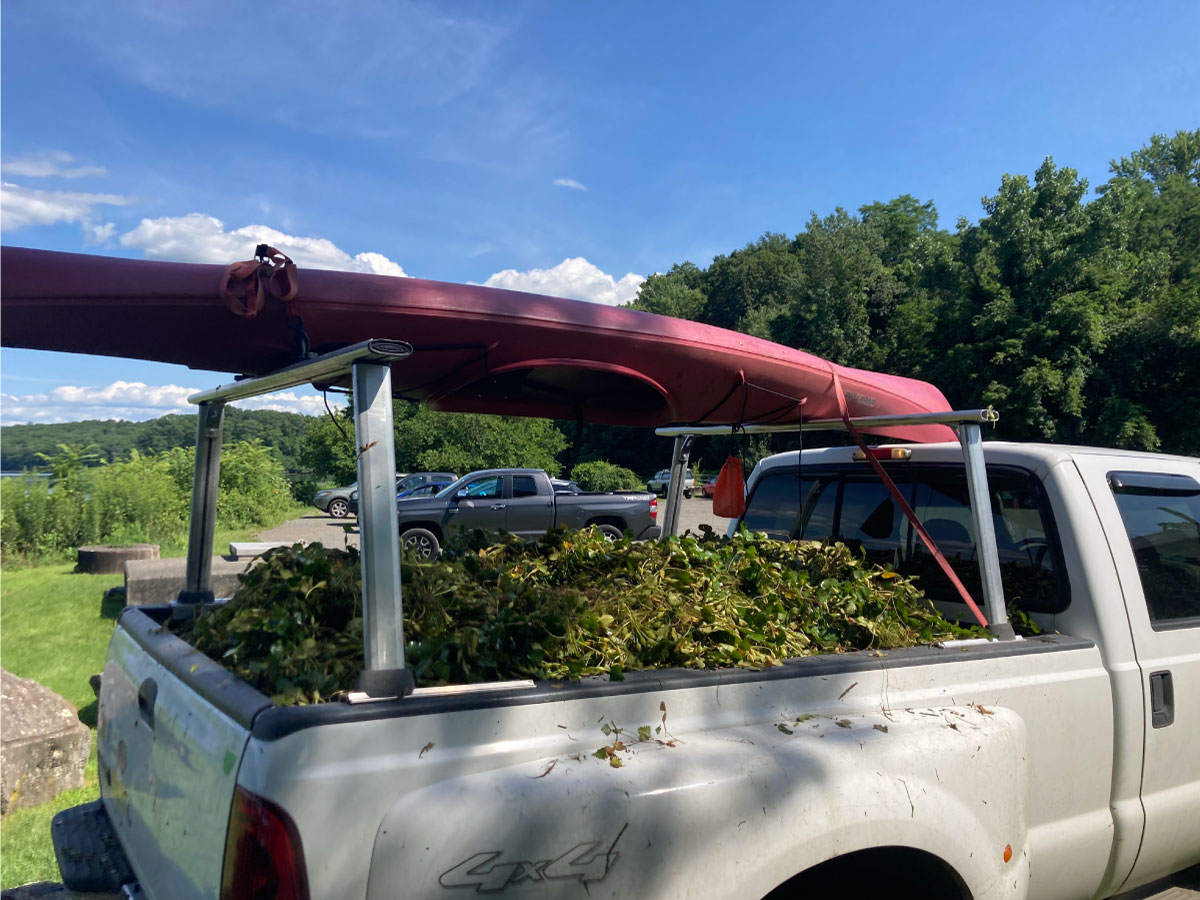Invasive Species Removal
Heather Wyman, Conservation Committee
If all plants are not weeds, and not all weeds are invasive, how do you know which plants don't belong in our local outdoor spaces? How can we tell a "good" weed from a "bad" one? That answer can be found by joining in on a local conservation event, where instruction and hands-on removal can happen safely, and with luck, a bit of fun!
Identification is key. Report invasive plant infestations to EDDMapS.
Identification is key. Report invasive plant infestations to EDDMapS.
Garlic mustard was introduced to the Western Hemisphere as a culinary herb in the 1860s and is considered an invasive species in much of North America. It is listed as a noxious or restricted plant in eight states, including Massachusetts (Wikipedia, 2023a).
The plant spreads its seeds via the wind and gains a foothold in fields and forests by emerging earlier in spring than many native plants. By the time native species are ready to grow, garlic mustard has blocked their sunlight and outcompeted them for moisture and vital nutrients (The Nature Conservancy, 2023). It has no known predators to contain its spread.
The Conservation Committee pulls garlic mustard at Mass Audubon's Canoe Meadows Wildlife Sanctuary in Pittsfield, MA. It is easy to spot, and yes, the leaves have a garlicky smell when crushed. Its seeds spread easily, and can quickly overtake an area of underbrush, releasing a chemical throughout the surrounding ground area that inhibits the growth of other native plants, including trees.
The best way to eliminate garlic mustard is to pick the plant, carefully remove the tubular stem, bag it up, and then put it in the garbage, as the seeds will still spread if composted.
Japanese barberry is a species of flowering plant native to Japan and eastern Asia, but widely naturalized in North America where it has become a problematic invasive (Wikipedia, 2023b). It was introduced to the United States in the late 1800s as an ornamental plant and is widely used in landscaping because deer will not eat it (MDNR, 2012).
Growing to just over 3 feet tall and about 8 feet wide, Japanese barberry exhibits green leaves that turn red in autumn, brilliant red fruits and pale yellow flowers. This small, deciduous shrub replaces native species – leading to a decline in biological variability – and raises the pH of soil. It also provides an exceptionally favorable environment for ticks due to its dense foliage. Japanese barberry is on the Massachusetts Prohibited Plant List which means it cannot be imported, sold, or traded in Massachusetts (Wikipedia, 2023b).
The Conservation Committee partners with the Wild & Scenic Westfield River Committee to remove barberry plants at several locations, including Chesterfield Gorge. View Wild & Scenic Westfield River's barberry removal video on how to recognize and eradicate Japanese barberry.
Multiflora rose is a species of rose native to China, Japan, and Korea. It was introduced to North America in the 1860s and used in the horticultural industry as root stock for rose breeding and as an ornamental garden plant. By the 1930s, multiflora rose had been widely planted throughout the Midwest and northeastern states at the encouragement of the USDA Soil Conservation Service for erosion control, wildlife habitat enhancement, and as a natural barrier to roaming farm animals (Wenning, 2023)
Multiflora rose is a climbing, rambling shrub with a single stem, or at times multiple stems, which can grow up to 10 to 15 feet or more. White flowers appear from May through June and are grouped or clustered. Red fruits appear in August and persist into the winter months (Wenning, 2012).
Multiflora rose grows aggressively and forms dense, impenetrable, thorny thickets that overwhelm native vegetation and may be detrimental to the nesting of birds (Invasive.org, 2023). Each plant can produce half a million seeds that may remain viable for up to 20 years (Mass Wildlife, 2023). The importation, distribution, trade, and sale of multiflora rose is banned in Massachusetts (MIPAG, 2023).
The Conservation Committee removes multiflora rose in collaboration with the Wild & Scenic Westfield River Committee. View their multiflora rose removal video on how to eradicate this invasive plant.
Oriental bittersweet is native to China, Japan, and Korea. It was introduced to North America in 1879 for aesthetic purposes, such as floral arrangements. Because of improper disposal, the plant has spread from Georgia to Wisconsin and into parts of the Appalachians, affecting the ecology of over 33 states (Wikipedia, 2023d). Massachusetts bans its importation, distribution, trade, and sale (MIPAG, 2023).
A climbing, deciduous, woody vine, Oriental bittersweet can grow up to 60 feet long and 6 inches in diameter. Small greenish flowers bloom from May to June. Yellow-orange capsules are produced between July and October, which split open later in the fall to reveal red-orange berries which contain two or three seeds each. The vine grows rapidly and wraps around nearby shrubs and trees, cutting off the flow of water and nutrients. Weakened trees, burdened with the weight of the massive woody vines and leaves, are then vulnerable to damage from ice and windstorms (MDNR, 2012).
The Conservation Committee removes Oriental bittersweet at NobleView Outdoor Center.
Phragmites is a genus of four species of large, reed grasses found in wetlands throughout temperate and tropical regions of the world. Phragmites likely arrived in the United States from Eurasia in the 19th century as seeds in the ballast of ships. Unlike many native wetland plants, phragmites are not a valuable food source for waterfowl (Chesapeake Bay Program, 2023). Phragmites are on the Massachusetts Prohibited Plant List (DCR, 2017).
Phragmites are tall perennial grasses that can reach 16 feet high and form dense, impenetrable monocultures (DCR, 2017). Also known as common reeds, phragmites have feathery seed plumes at the top of tall, stiff stems. Young plants have purplish-brown seed plumes that turn tan or whitish as the plant matures. Phragmites' sheath-like leaves grow two feet long and taper to a point at the tip. Their foliage is gray-green during the growing season and brown in autumn before dropping off, leaving only the feathery plumes (Chesapeake Bay Program, 2023). There are no plants that phragmites can be confused with due to its unusual height and conspicuous silky plumes (DCR, 2017).
Phragmites quickly spread through marshes and wetland areas. They replace native plants, deny fish and wildlife nutrients and space; block access to the water for swimming, fishing and other recreational endeavors; spoil shoreline views; and pose a fire hazard. They also alter wetland biogeochemistry and affect both floral and faunal species assemblages, including potentially reducing nitrogen and phosphorus availability for other plants (Wikipedia, 2023c).
The Conservation Committee removes phragmites in collaboration with the Wild & Scenic Westfield River Committee.
Water chestnut was introduced into the northeastern United States in the late 1800s for ornamental purposes. The exact path for the introduction is unknown. It has been declared a noxious weed in Arizona, Massachusetts, North Carolina and South Carolina and its sale is prohibited in many states, including Massachusetts (MIPAG, 2023).
Water chestnut can grow in any freshwater setting, from intertidal waters to 12 feet deep, although it prefers nutrient-rich lakes and rivers. It forms dense floating mats severely limiting light – a critical element of aquatic ecosystems. Once established, it can reduce oxygen levels, increasing the potential for fish kills. It competes with native vegetation and is of little value to waterfowl. Water chestnut infestations limit boating, fishing, swimming and other recreational activities and its sharp fruits, if stepped on, can cause painful wounds (Invasive.org, 2023).
The Conservation Committee removes water chestnut with the Connecticut River Conservancy (CRC) and the Chicopee 4 Rivers Watershed. View the CRC's water chestnut removal training video on YouTube and a slideshow of the Western MA/CRC water chestnut pull in July 2021 elsewhere on this webpage.
Conservation Research Advocacy
Next Initiative: Pit Privy Replacements »


